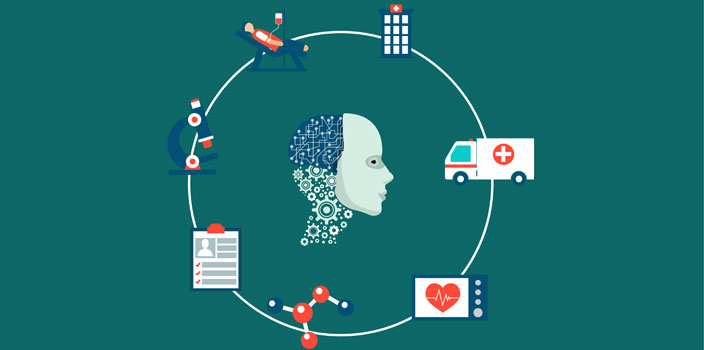
Normally, blood glucose levels are tightly controlled by insulin, a hormone produced by the pancreas. Insulin lowers the blood glucose level. When the blood glucose elevates (for example, after eating food), insulin is released from the pancreas to normalize the glucose level. In patients with diabetes, the absence or insufficient production of insulin causes hyperglycemia. Diabetes is a chronic medical condition, meaning that although it can be controlled, it lasts a lifetime.
What is diabetes?
Diabetes mellitus is a group of metabolic diseases characterized by high blood sugar (glucose) levels, that result from defects in insulin secretion, or action, or both. Diabetes mellitus, commonly referred to as diabetes (as it will be in this article) was first identified as a disease associated with “sweet urine,” and excessive muscle loss in the ancient world. Elevated levels of blood glucose (hyperglycemia) lead to spillage of glucose into the urine, hence the term sweet urine.
Types of diabetes
 There are two major types of diabetes, called type 1 and type 2. Type 1 diabetes was also called insulin-dependent diabetes mellitus (IDDM), or juvenile-onset diabetes mellitus. In type 1 diabetes, the pancreas undergoes an autoimmune attack by the body itself and is rendered incapable of making insulin. Abnormal antibodies have been found in the majority of patients with type 1 diabetes.
There are two major types of diabetes, called type 1 and type 2. Type 1 diabetes was also called insulin-dependent diabetes mellitus (IDDM), or juvenile-onset diabetes mellitus. In type 1 diabetes, the pancreas undergoes an autoimmune attack by the body itself and is rendered incapable of making insulin. Abnormal antibodies have been found in the majority of patients with type 1 diabetes.
In autoimmune diseases, such as type 1 diabetes, the immune system mistakenly manufactures antibodies and inflammatory cells that are directed against and cause damage to patients’ own body tissues. In persons with type 1 diabetes, the beta cells of the pancreas, which are responsible for insulin production, are attacked by the misdirected immune system. It is believed that the tendency to develop abnormal antibodies in type 1 diabetes is, in part, genetically inherited, though the details are not fully understood.
Type 2 diabetes was also referred to as non-insulin dependent diabetes mellitus (NIDDM), or adult-onset diabetes mellitus (AODM). In type 2 diabetes, patients can still produce insulin but do so relatively inadequately for their body’s needs, particularly in the face of insulin resistance as discussed above. In many cases, this actually means the pancreas produces larger than normal quantities of insulin. A major feature of type 2 diabetes is a lack of sensitivity to insulin by the cells of the body (particularly fat and muscle cells).
Diabetes symptoms
- The early symptoms of untreated diabetes are related to elevated blood sugar levels, and loss of glucose in the urine. High amounts of glucose in the urine can cause increased urine output and lead to dehydration. Dehydration causes increased thirst and water consumption.
- The inability of insulin to perform normally has effects on protein, fat and carbohydrate metabolism. Insulin is an anabolic hormone, that is, one that encourages the storage of fat and protein.
- A relative or absolute insulin deficiency eventually leads to weight loss despite an increase in appetite.
- Some untreated diabetes patients also complain of fatigue, nausea, headache, and vomiting.
- Patients with diabetes are prone to developing infections of the bladder, skin, and vaginal areas.
- Fluctuations in blood glucose levels can lead to blurred vision. Extremely elevated glucose levels can lead to lethargy and
- Hypoglycemia is diagnosed by a low blood sugar with symptoms that resolve when the sugar level returns to the normal range
Diabetes treatment
The major goal of treating diabetes is to minimize any elevation of blood sugar (glucose) without causing abnormally low levels of blood sugar. Type1 diabetes is treated with insulin, exercise, and a diabetic diet. Type2 diabetes is treated first with weight reduction, a diabetic diet, and exercise. When these measures fail to control the elevated blood sugars, oral medications are used. If oral medications are still insufficient, treatment with insulin is considered.
Adherence to a diabetic diet is an important aspect of controlling elevated blood sugar in patients with diabetes. The American Diabetes Association (ADA) has provided guidelines for a diabetic diet. The ADA diet is a balanced, nutritious diet that is low in fat, cholesterol, and simple sugars. The total daily calories are evenly divided into three meals. In the past two years, the ADA has lifted the absolute ban on simple sugars. Small amounts of simple sugars are allowed when consumed with a complex meal.
Varying combinations of medications also are used to correct abnormally elevated levels of blood glucose in diabetes. As the list of medications continues to expand, treatment options for diabetes type 2 can be better tailored to meet individual needs. Not every patient with type 2 diabetes will benefit from every drug, and not every drug is suitable for each patient. Patients with type 2 diabetes should work closely with their physicians to achieve an approach that provides the greatest benefits while minimizing risks.
Guild lines for prevention
Patients with diabetes should never forget the importance of diet and exercise. The control of diabetes starts with a healthy lifestyle regardless of what medications are being used.
It’s important to remember that if a drug can provide more than one benefit (lower blood sugar and have a beneficial effect on cholesterol, for example), it should be preferred. It’s also important to bear in mind that the cost of drug therapy is relatively small compared to the cost of managing the long-term complications associated with poorly controlled diabetes.
Diabetes children must undergo the magnitude of change in blood sugar control that medications would provide and consult the doctor if any coexisting conditions like high blood pressure or high cholesterol persist.
Conclusion
Findings from the Diabetes Control and Complications Trial (DCCT) and the United Kingdom Prospective Diabetes Study (UKPDS) have clearly shown that aggressive and intensive control of elevated levels of blood sugar in patients with type1 and type2 diabetes decreases the complications of nephropathy, neuropathy, retinopathy, and may reduce the occurrence and severity of large blood vessel diseases.


